Traduction générée automatiquement
Montrer le texte original
Montrer le texte traduit
Image dimensions: 8.8 x 5.5 cm. Ex Libris - PF is an original xilograph artwork realized by Michel Fingesten in the 1930s Hand-signed on the lower center and hand written notes. Mint conditions except for some foxings. Includes passepartout : 49 x 34 cm Ex Libris is a Latin phrase meaning a bookplate that identifies the owner of the book into which it is pasted. Michel Fingesten Michel Finkelstein, known as Fingesten, was born in 1884 in Buzkovice u Ostravy; he was a painter and engraver, who was famous particularly for his extraordinary production of Ex Libris (bookplates). After studying at the Academy of Fine Arts in Vienna, and in Monaco with Franz von Stuck, who addressed him to the caricature and to the graphics of small size, Fingesten left Austria; he travelled all over the world, visiting Europe, the United States of America and the Oriental countries. Fingesten’s stay in Berlin since 1913 was decisive for his contact with the world of the engraving. After his adhesion to the New Secession, Fingesten destroyed his previous pictorial production and he decided to dedicate himself to the dimension of the engraving; even if he preferred the graphics, he continued to see himself as a “painter”. The German city was characterized by a very dynamic artistic atmosphere that stimulated Fingesten. The engravings of this artist were published since 1915 in files and books in limited edition. Fingesten’s works were published also in the famous periodicals of the expressionist avant-garde, like “Genius” and “Marsyas”, with the artists and the writers most important of his age. Considered as a genius of the Ex Libris, that became with him a big art of small size, Fingesten realised more over than 1.500 of these brands of property since 1915. Fingesten’s Ex Libris were nourishment for the bibliophiles, who glued the bookplates on the first page of theirs books to indicate the property and who traded these Ex Libris. The Ex Libris is a genre that doesn’t have confines and that can’t be reduced to indicate the name of the owner on the book, on which it is glued. It left his old function of simple heraldic sign of property, and it became almost the projection of the bibliophile’s personality. Even if he didn’t fall in the eclecticism, Michel Fingesten used generously the medium of the quote, in the subject, in the form and in the style. In the 20s, for example, his art oscillates between Otto Dix and George Grosz, of which he overcomes the social critique and the erotism, and Karl Arnold of which he beats the irony. The Great Depression of 1929 and the rapid advance of the Nazism contributed in a significant way to the progressive isolation of the Czech painter and engraver. In the spring of the 1935, Fingesten left Germany and went to Italy, where he settled in Trieste and Milan. The collector Mantero remembers about Fingesten’s Italian stay that “he lived in a home without furnitures” in Via Chiaravalle 11. Mantero, who was one of the most important Fingesten’s customers of Ex Libris, wrote: “I understood he had a difficult and poor life for absence of money, but he didn’t have ambition of a rich life, indeed he told me that the earnings to buy some bread and a glass of wine were enough for him”. In that period, the main means of subsistence were the commissions of the collectors of Ex Libris, especially the collectors of Milan and Como, members of the circle of friends of the art merchant Luigi Filippo Bolaffio. Also known as “Picasso of the Ex Libris”, Fingesten explored this artistic medium and he elevated it with new and powerful expressive resources. When the Ex Libris was detached from its practical function, the Artist began to create Ex Libris also for fake customers, for “famous contemporary people”, poets, musicians, and since 1928, for political men. The Ex Libris, realised with a lot of graphic techniques, like the etching, the drypoint and the lithography, has always (with the graphics of occasion) the signature of the Artist, that underlines the awareness of his valour. An important chapter of the production of this Artist was dedicated to the erotic Ex Libris, that for their irony were understood with difficulty by people that didn’t belong to the circle of the Artist. Some of the most secret and rare erotic works by Fingesten are linked to the commissions of Gianni Mantero. The dominant element of these engravings is the sarcasm, that is sometimes connected to a gloomy irony, and to the presence of the death, that coincided with the war, particularly in the last years of the Artist existence. In his compositions, Fingesten was a narrator of life and death, of sex and love, of nightmares, hopes, art and poetry. His narration wasn’t without the time and the space, but it was at the center of the contemporary dimension, in the 20s and 30s of the anguished Europe that was going to the ruin. We can underline that the relationship between the Artist and the customer had an important role in the definition of the power of these graphic works; actually the creative energy, that was born from the contact between the Artist inspiration and the customer personality, generates a strong expressive freedom. After his death, Michel Fingesten and his works were forgotten; today there is a new attention to this very important artist and to his visionary sign. Bibliography • N. Nechwatal, Michel Fingesten – Das graphische Werk, Coburg 1984 • A. Tomasetig, Michel Fingesten: dalla collezione Cauti una mostra di ex libris e grafica d’occasione, 2005 • A. Parik, The unknown Michel Fingesten, Praha 2008 This artwork is shipped from Italy. Under existing legislation, any artwork in Italy created over 70 years ago by an artist who has died requires a licence for export regardless of the work’s market price. The shipping may require additional handling days to require the licence according to the final destination of the artwork.
Les dimensions de l'image : 8.8 x 5,5 cm. Ex Libris - PF est une xilographie originale réalisée par Michel Fingesten dans les années 1930. Elle est signée à la main au centre inférieur et accompagnée de notes manuscrites. Etat neuf sauf pour quelques renards. Comprend un passe-partout : 49 x 34 cm Ex Libris est une expression latine signifiant un ex-libris qui identifie le propriétaire du livre dans lequel il est collé. Michel Fingesten Michel Finkelstein, dit Fingesten, est né en 1884 à Buzkovice u Ostravy ; il était peintre et graveur, célèbre notamment pour son extraordinaire production d'Ex Libris (ex-libris). Après des études à l'Académie des Beaux-Arts de Vienne, et à Monaco avec Franz von Stuck, qui lui a enseigné la caricature et le graphisme de petit format, Fingesten quitte l'Autriche ; il voyage dans le monde entier, visitant l'Europe, les États-Unis d'Amérique et les pays orientaux. Le séjour de Fingesten à Berlin depuis 1913 a été décisif pour son contact avec le monde de la gravure. Après son adhésion à la Nouvelle Sécession, Fingesten détruit sa production picturale précédente et il décide de se consacrer à la dimension de la gravure ; même s'il préfère le graphisme, il continue à se considérer comme un "peintre". La ville allemande se caractérise par une atmosphère artistique très dynamique qui stimule Fingesten. Les gravures de cet artiste ont été publiées dès 1915 dans des dossiers et des livres en édition limitée. Les œuvres de Fingesten ont également été publiées dans les célèbres périodiques de l'avant-garde expressionniste, comme "Genius" et "Marsyas", avec les artistes et les écrivains les plus importants de son époque. Considéré comme un génie de l'Ex Libris, qui est devenu avec lui un grand art de petite taille, Fingesten a réalisé plus de 1.500 de ces marques de propriété depuis 1915. Les Ex Libris de Fingesten ont nourri les bibliophiles, qui ont collé les ex-libris sur la première page de leurs livres pour indiquer la propriété et qui ont échangé ces Ex Libris. Les Ex Libris sont un genre qui n'a pas de limites et qui ne peut pas être réduit pour indiquer le nom du propriétaire sur le livre, sur lequel il est collé. Il a quitté son ancienne fonction de simple signe héraldique de propriété, et il est devenu presque la projection de la personnalité du bibliophile. Même s'il ne tombe pas dans l'éclectisme, Michel Fingesten utilise généreusement le support de la citation, dans le sujet, dans la forme et dans le style. Dans les années 20, par exemple, son art oscille entre Otto Dix et George Grosz, dont il surmonte la critique sociale et l'érotisme, et Karl Arnold dont il bat l'ironie. La Grande Dépression de 1929 et l'avancée rapide du nazisme ont contribué de manière significative à l'isolement progressif du peintre et graveur tchèque. Au printemps 1935, Fingesten quitte l'Allemagne et se rend en Italie, où il s'installe à Trieste et à Milan. Le collectionneur Mantero se souvient du séjour italien de Fingesten qui "vivait dans une maison sans meubles" au 11 de la Via Chiaravalle. Mantero, qui était l'un des plus importants clients de Fingesten de Ex Libris, écrit : "Je comprenais qu'il avait une vie difficile et pauvre par manque d'argent, mais il n'avait pas l'ambition d'une vie riche, en effet il m'a dit que les gains pour acheter du pain et un verre de vin lui suffisaient". À cette époque, les principaux moyens de subsistance étaient les commissions des collectionneurs d'Ex Libris, en particulier les collectionneurs de Milan et de Côme, membres du cercle d'amis du marchand d'art Luigi Filippo Bolaffio. Aussi connu sous le nom de "Picasso des Ex Libris", Fingesten a exploré ce médium artistique et l'a élevé avec de nouvelles et puissantes ressources expressives. Lorsque l'Ex Libris a été détaché de sa fonction pratique, l'artiste a commencé à créer des Ex Libris également pour de faux clients, pour des "personnes contemporaines célèbres", des poètes, des musiciens et, depuis 1928, pour des hommes politiques. L'Ex Libris, réalisé avec de nombreuses techniques graphiques, comme la gravure, la pointe sèche et la lithographie, a toujours (avec les graphiques d'occasion) la signature de l'Artiste, qui souligne la conscience de sa valeur. Un chapitre important de la production de cet Artiste a été consacré aux Ex Libris érotiques, qui pour leur ironie ont été compris avec difficulté par des personnes qui n'appartenaient pas au cercle de l'Artiste. Certaines des œuvres érotiques les plus secrètes et les plus rares de Fingesten sont liées aux commandes de Gianni Mantero. L'élément dominant de ces gravures est le sarcasme, qui est parfois lié à une ironie lugubre, et à la présence de la mort, qui a coïncidé avec la guerre, en particulier dans les dernières années de l'existence de l'Artiste. Dans ses compositions, Fingesten était un narrateur de la vie et de la mort, du sexe et de l'amour, des cauchemars, des espoirs, de l'art et de la poésie. Sa narration n'était pas dépourvue de temps et d'espace, mais elle était au centre de la dimension contemporaine, dans les années 20 et 30 de l'Europe angoissée qui allait à la ruine. Nous pouvons souligner que la relation entre l'artiste et le client a joué un rôle important dans la définition de la puissance de ces œuvres graphiques ; en fait, l'énergie créative, qui est née du contact entre l'inspiration de l'artiste et la personnalité du client, génère une forte liberté expressive. Après sa mort, Michel Fingesten et ses œuvres ont été oubliés ; aujourd'hui, une nouvelle attention est portée à cet artiste très important et à son signe visionnaire. Bibliographie - N. Nechwatal, Michel Fingesten - Das graphische Werk, Coburg 1984 - A. Tomasetig, Michel Fingesten : dalla collezione Cauti una mostra di ex libris e grafica d'occasione, 2005 - A. Parik, The unknown Michel Fingesten, Praha 2008 Cette œuvre est expédiée d'Italie. En vertu de la législation en vigueur, toute œuvre d'art créée en Italie il y a plus de 70 ans par un artiste décédé nécessite une licence d'exportation, quel que soit le prix du marché de l'œuvre. L'expédition peut nécessiter des jours de manutention supplémentaires pour obtenir la licence en fonction de la destination finale de l'œuvre d'art.
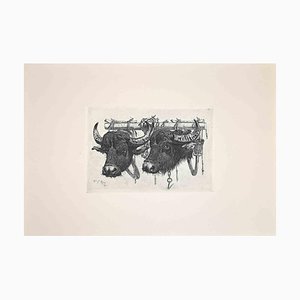
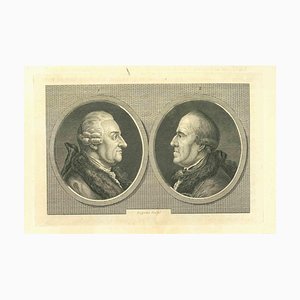
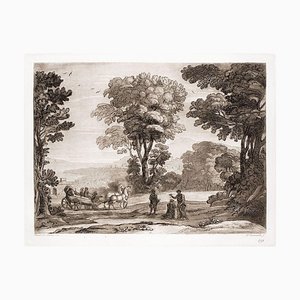

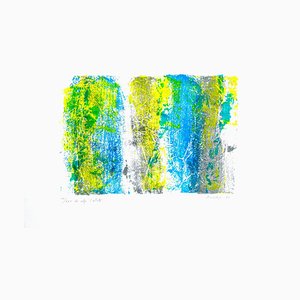
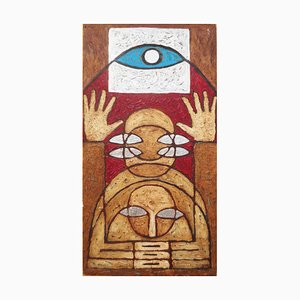
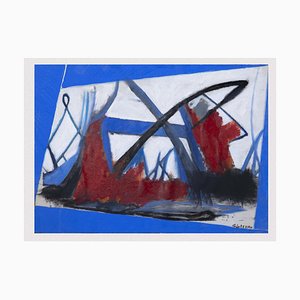
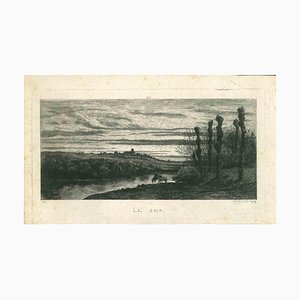
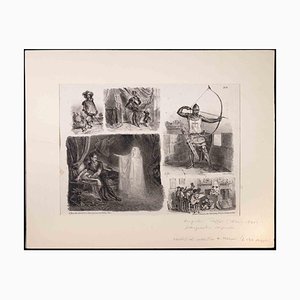
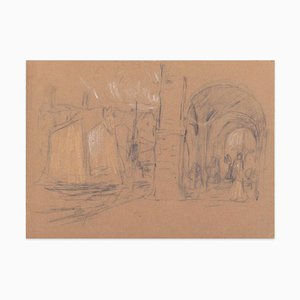
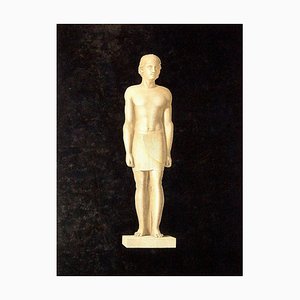
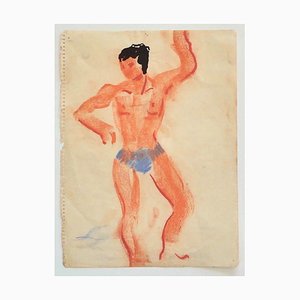

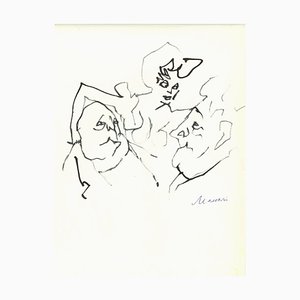


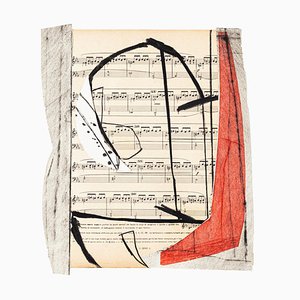
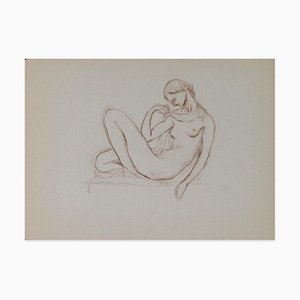


Contactez-nous
Faire une offre
Nous avons remarqué que vous êtes nouveau sur Pamono !
Veuillez accepter les Termes, Conditions et Politique de Confidentialité
Contactez-nous
Faire une offre
Vous y êtes presque!
Pour suivre votre conversation sur la plateforme, merci de compléter votre enregistrement Pour procéder avec votre offre sur la plateforme, veuillez compléter l’enregistrement.Envoyé!
Merci pour votre message, un membre de notre équipe vous contactera rapidemment
Si vous etes un professionnel du design, merci de vous inscrire ici pour pouvoir profiter de bénéfices exclusifs